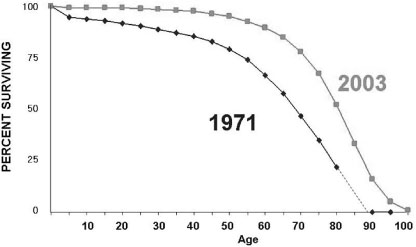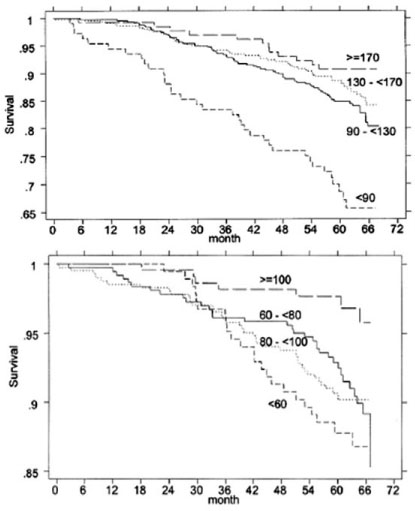Sarcopenia of the Old Age
- Affiliations
-
- 1Departments of Internal Medicine, College of Medicine, Pochon CHA University, Korea.
- KMID: 2178235
- DOI: http://doi.org/10.3803/jkes.2007.22.1.1
Abstract
- No abstract available.
MeSH Terms
Figure
Cited by 4 articles
-
Prevalence of Sarcopenia in Healthy Korean Elderly Women
Eun Sil Lee, Hyoung Moo Park
J Bone Metab. 2015;22(4):191-195. doi: 10.11005/jbm.2015.22.4.191.Effect of Vitamin D Supplementation on the Physiological Indices, Muscle Mass, and Physical Functions of Aged Women
In Kyung Kim, Ok Soo Kim
Korean J Adult Nurs. 2013;25(5):539-548. doi: 10.7475/kjan.2013.25.5.539.Clinical Implication of Sarcopenia in Patients with Inflammatory Bowel Disease
Seong-Eun Kim
Korean J Gastroenterol. 2018;71(6):308-314. doi: 10.4166/kjg.2018.71.6.308.Effects of Sarcopenic Obesity on Metabolic Syndrome in Korean Elders: Using Data from the Korea National Health and Nutrition Examination Survey (2008-2011)
Hyun-A Choi, Kyung-Min Park
J Korean Acad Community Health Nurs. 2016;27(3):231-241. doi: 10.12799/jkachn.2016.27.3.231.
Reference
-
1. Baumgartner RN, Koehler KM, Gallagher D, Romero L, Heymsfield SB, Ross RR, Garry PJ, Lindeman RD. Epidemiology of sarcopenia among the elderly in New Mexico. Am J Epidemiol. 1998. 147:755–763.2. Melton LJ 3rd, Khosla KM, Crowson CS, O'Connor N, O'Fallon WM, Riggs BL. Epidemiology of sarcopenia. J Am Geriatr Soc. 2000. 48:625–630.3. Newman AB, Kupelian V, Visser M, Simonsick E, Goodpaster B, Nevitt M, Kritchevsky SB, Tylavsky FA, Rubin SM, Harris TB. Sarcopenia: Alternative definitions and associations with lower extremity function. J Am Geriatr Soc. 2003. 51:1602–1609.4. Reed RL, Pearlmutter L, Yochum K, Meredith KE, Mooradian AD. The relationship between muscle mass and muscle strength in the elderly. J Am Geriatr Soc. 1991. 39:555–561.5. Harris TB. Muscle mass and strength: relation to function in population studies. J Nutrition. 1997. 127:1004S–1006S.6. Landers KA, Hunter GR, Wetzstein CJ, Bamman MM, Weinsier RL. The interrelationship among muscle mass, strength and the ability to perform physical tasks of daily living in younger and older women. J Gerontol A Biol Sci Med Sci. 2001. 56A:B443–B448.7. Visser M, Deeg DJH, Lips P, Harris T, Bouter LM. Skeletal muscle mass and muscle strength in relation to lower-extremity performance in older men and women. J Am Geriatr Soc. 2000. 48:381–386.8. Visser M, Newman AB, Nevitt MC, Kritchevsky SB, Stamm EB, Goodpaster BH, Harris TB. Reexamining the sarcopenia hypothesis: muscle mass versus muscle strength. Ann NY Acad Sci. 2000. 904:456–461.9. Villareal DT, Banks M, Siener C, Sinacore DR, Klein S. Physical frailty and body composition in obese elderly men and women. Obesity Research. 2004. 12:913–920.10. Baumgartner RN, Wayne SJ, Waters DL, Janssen I, Gallagher D, Morley JE. Sarcopenic obesity predicts instrumental activities of daily living disability in the elderly. Obesity Research. 2004. 12:1995–2000.11. Janssen I, Baumgartner RN, Ross R, Rosenberg IH, Roubenoff R. Skeletal muscle cutpoints with elevated physical disability risk in older men and women. Am J Epidemiol. 2004. 159:413–421.12. Rantanen T, Volpato S, Ferrucci L, Heikkinen E, Fried LP, Guralnik JM. Handgrip strength and cause-specific and total mortality in older disabled women: exploring the mechanism. J Am Geriatr Soc. 2003. 51:636–641.13. Newman AB, Kupelian V, Visser M, Simonsick EM, Goodpaster BH, Kritchevsky SB, Tylavsky FA, Rubin SM, Harris TB. Strength, but not muscle mass, is associated with mortality in the Health, Aging and Body Composition Study cohort. J Gerontol A Biol Sci Med Sci. 2006. 61:72–77.









